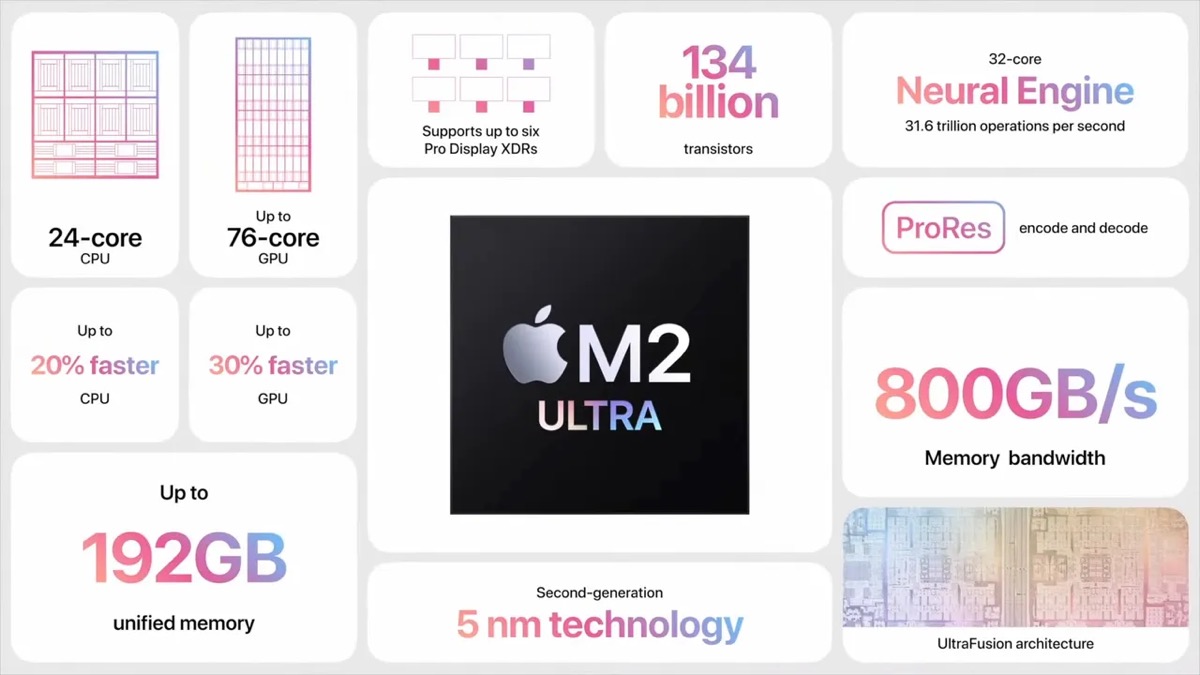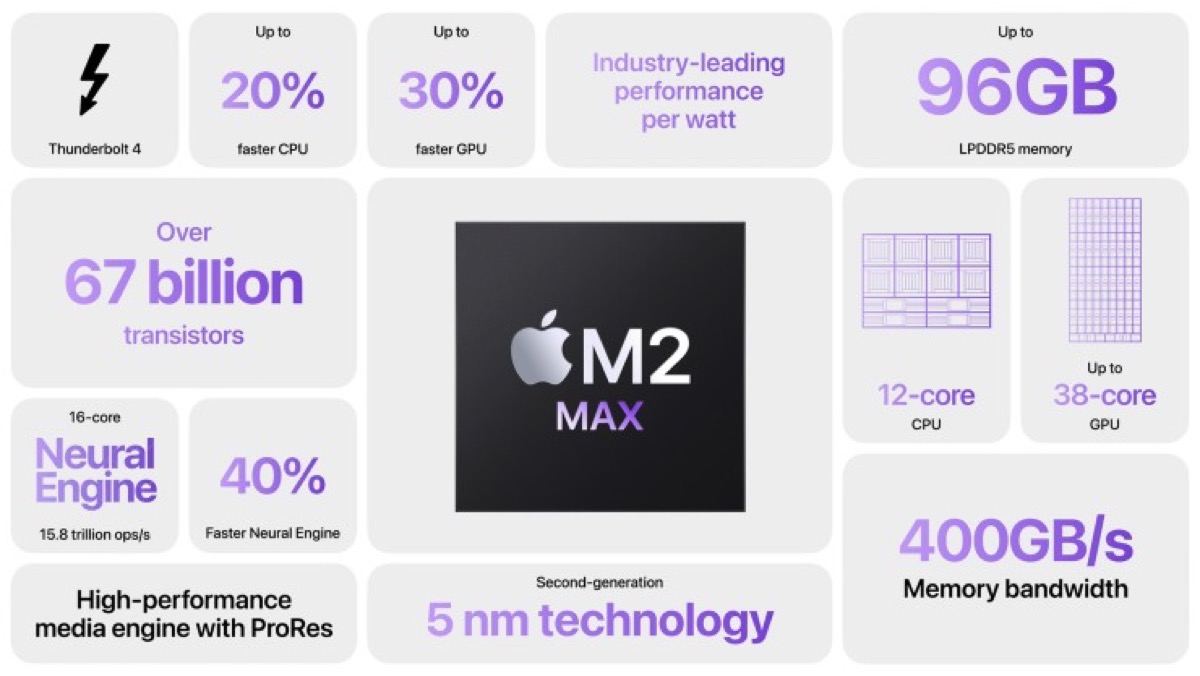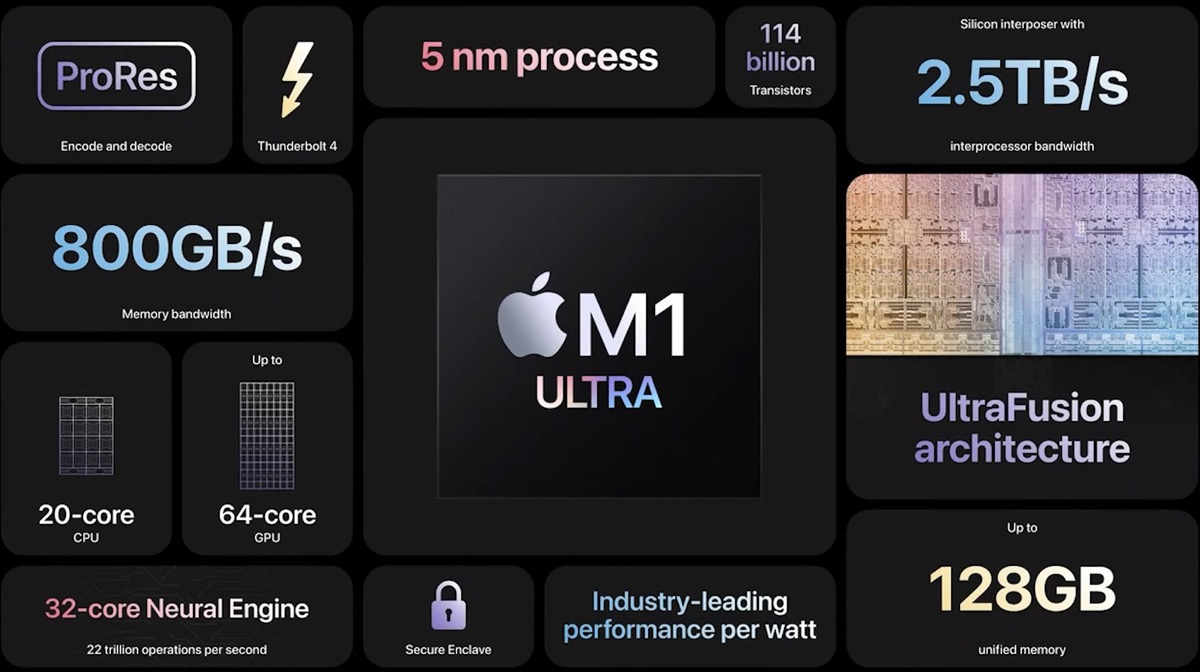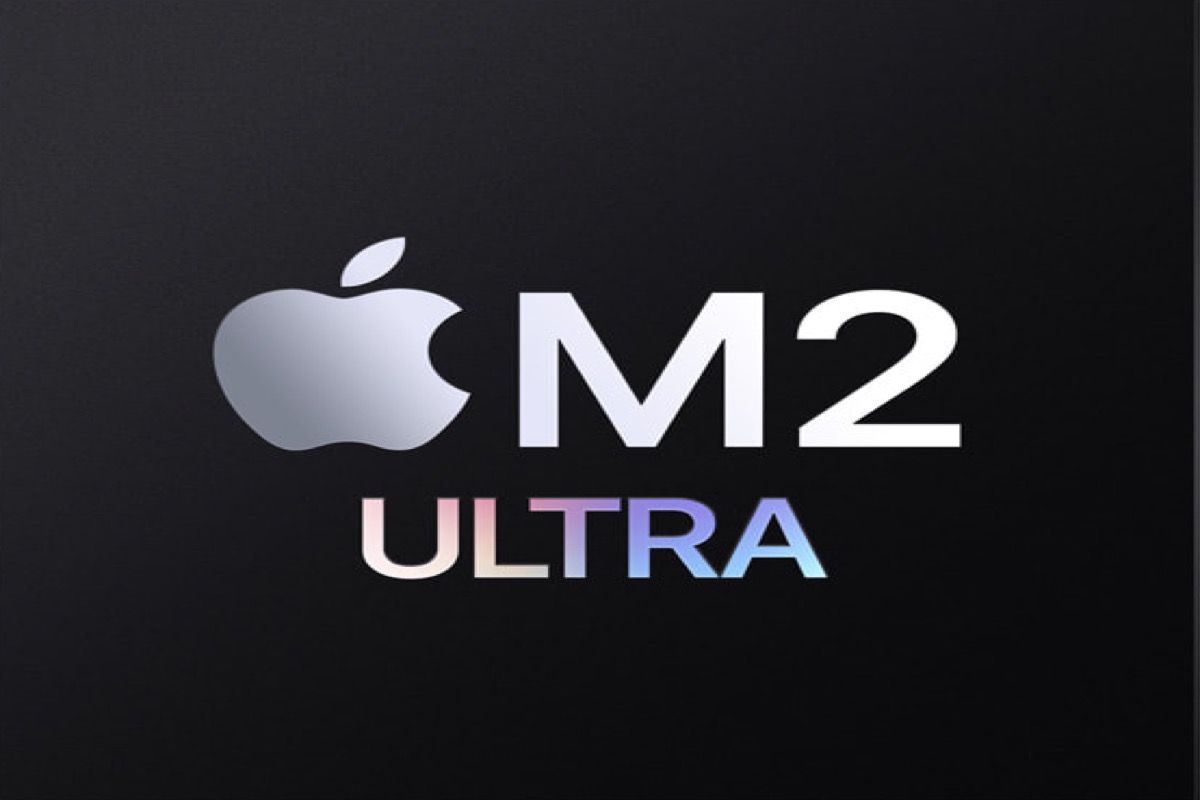Apple released its new Apple Silicon-M2 Ultra on WWDC in June 2023. It has been described as the largest and the most capable Mac processor Apple has ever created, and this chip makes the new Mac Studio and Mac Pro the most powerful Mac desktops ever made. Now, let's take a look.
What is M2 Ultra?
M2 Ultra is based on the second generation of Apple Silicon, sharing the same architecture as the M2, M2 Pro, and M2 Max. It takes two M2 Max chips and connects them via UltraFushion architecture, Apple's industry-leading, custom-built packaging technology. UltraFusion's architecture enables M2 Ultra to appear as a single chip to software.

The Apple M2 Ultra chip is based on the second generation of Apple Silicon architecture but with a larger die than the standard M2 processor.
Compared to M2 Max and M2 Pro, M2 Ultra has 24 CPU cores, up to 76 GPU cores, up to 192GB of unified memory, 134 billion transistors, and 800GB/s memory bandwidth. However, M2 Max only has 12 CPU cores, up to 38 GPU cores, up to 98GB of unified memory, 67 billion transistors, and 400GB/s memory bandwidth, and M2 Pro is not that far apart from M2 Max.

M2 Ultra adopts the second-generation 5nm process and it has a 32-core neural engine capable of 31 billion operations per second. In addition, it uses ProRes to encode and decode and has a built-in Secure Enclave.
M2 Ultra VS M1 Ultra: Is M2 Ultra better than M1 Ultra?
M2 Ultra has a 24-core CPU and up to 76-core GPU, while M1 Ultra has a 20-core CPU and 64-core GPU. Apple claimed that M2 Ultra offers 20% faster CPU performance, 30% faster GPU performance, and 40% faster neural engine performance though they both adopt 16 core Neural Engine. M2 Ultra consists of 134 billion transistors while M1 Ultra has only 114 billion transistors, which is 20 billion less than before.
Memory is one that people always care about. M2 Ultra comes with up to a groundbreaking 192GB of unified memory capacity, while M1 Ultra comes with up to 128 GB. More significant memory is better for creative professionals because they need to load up large media files quickly. More unified memory allows for more data to be stored and accessed at a faster rate, with more applications being able to run simultaneously.

The table below shows more visually the differences between the two chips.
| M2 Ultra | M1 Ultra | |
| CPU cores | 24 | 20 |
| GPU cores | 60 or 76 | 48 or 64 |
| Memory | 192 GB | 128 GB |
| Memory bandwidth | 800 | 800 |
| Natural Engine | 32-core | 23-core |
M2 Ultra can run up to 22 streams of 8K ProRes 422 video, drive six Pro Display XDRs, and provide 50% faster video processing performance in DaVinci Resolve than an M1 Ultra-powered Mac Studio. Depending on your workflow, you can see a 50 to 100 percent jump in performance with the M2 Ultra over the M1 Ultra.
It's no exaggeration to say that M2 Ultra is likely the fastest processor in the world. With such excellent performance, it can help users to do kinds of workloads like 3D rendering, video encoding and rendering, machine learning, etc.
If you don't consider what we mentioned above but think over the better deal, it's M1 Ultra without a doubt.
Conclusion
This post covers everything you need to know about Apple's highest-end M2 chip - M2 Ultra. Hope this post can help you to learn more about this largest and the most capable chip.
This is all about M2 Ultra, and if you think this post is informative, please click the below buttons to share it with others.
FAQ about M2 Ultra
- QWhat is an Apple M2 Ultra?
-
A
It's a new Apple chip released on WWDC 2023, which makes the new Mac Studio and Mac Pro the most powerful Mac desktops ever made.
- QIs M2 Ultra faster than M1 Ultra?
-
A
Apple claimed that M2 Ultra offers 20% faster CPU performance, 30% faster GPU performance, and 40% faster neural engine performance though they both adopt 16 core Neural Engine.
